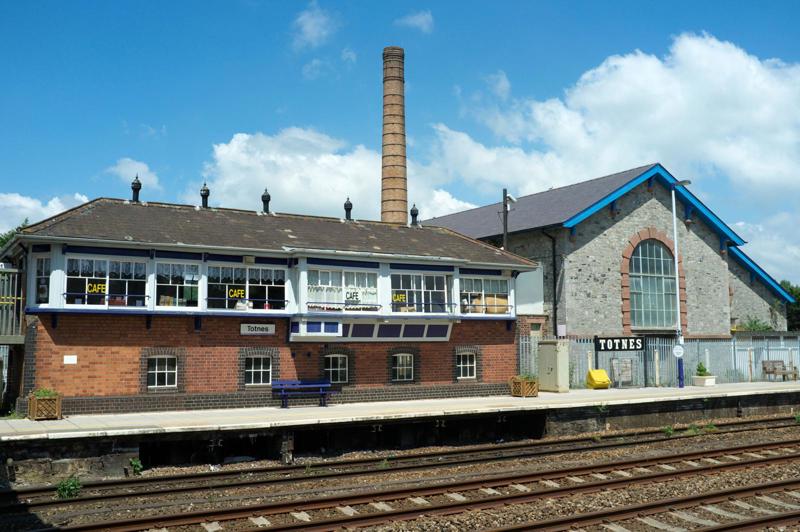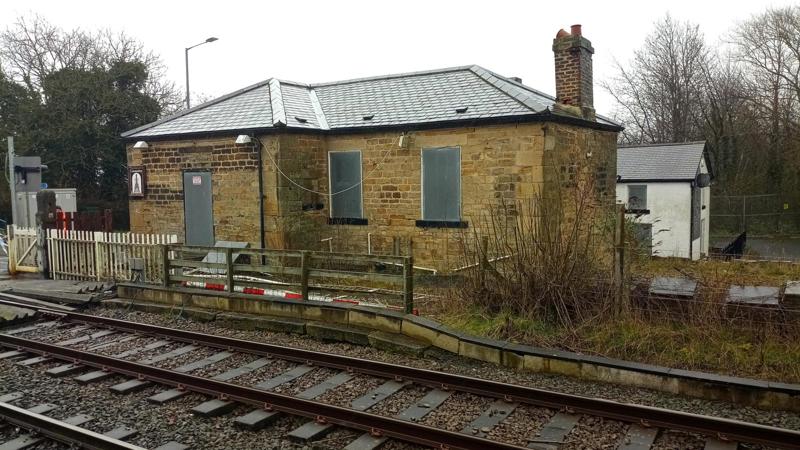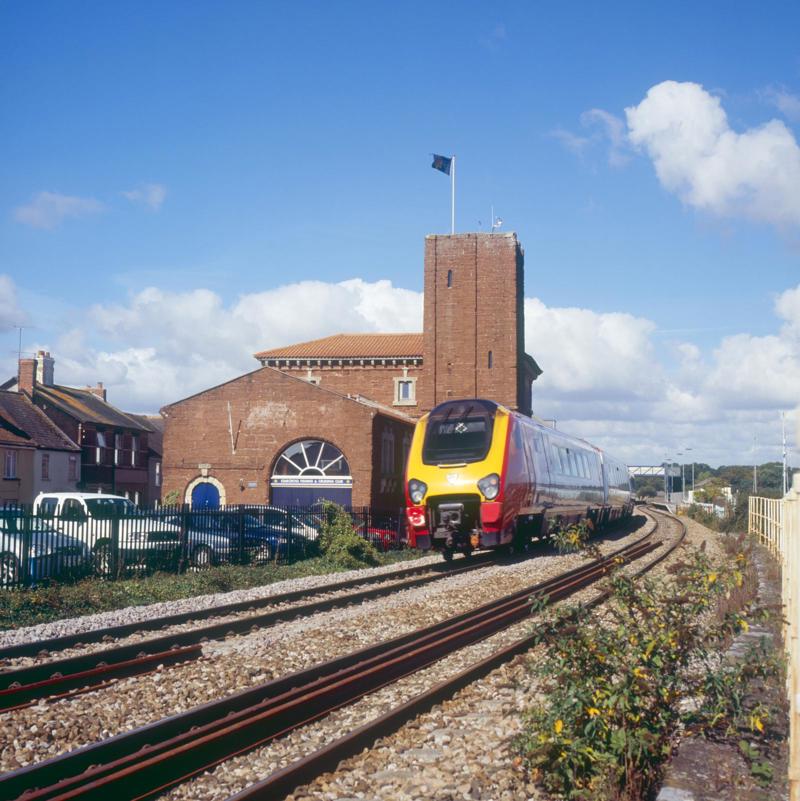Much is being done to conserve historic rail structures, but as we enter the bicentenary year, some are still at risk. Dr Joseph Brennan picks a few key ones.
In June 2024, Network Rail announced the return of rail services to Ayr station following the completion of “safety works” at the fire-damaged former Ayr Station Hotel.
Much is being done to conserve historic rail structures, but as we enter the bicentenary year, some are still at risk. Dr Joseph Brennan picks a few key ones.
In June 2024, Network Rail announced the return of rail services to Ayr station following the completion of “safety works” at the fire-damaged former Ayr Station Hotel.
A Category B-listed building on Scotland’s Buildings at Risk register (BARR) before being ravaged by fire in September 2023 (the second in four months, according to a report by the BBC), the fight to save this grand hotel had begun long before it was deliberately set alight.
But the September fire was definitive - a “devastating fire” in the words of ScotRail Safety, Sustainability & Asset Director David Lister that “had a significant impact on ScotRail services in the South West of Scotland”.
The “safety works” (a polite phrase for controlled, albeit necessary, demolition) took months. They addressed the risk of collapsing chimneys, fire-damaged supporting beams, and crumbling walls, and resulted in removal of the southern section of the building, the tower, and the first three bays of the northern section.
Aerial photography of the site, before and after, serves as a heartbreaking illustration of what we have lost during 2023-24.
But Ayr had been in trouble for some time. A read-through of the notes of Ayr’s entry on the BARR, dating back to 2012, shows it had been on the heritage-in-trouble radar since 2014. And the council had been pushing for demolition of the southern section of the building in 2022.
More than a decade before the fire, NR needed to carry out emergency works to the railway side of the building, to install scaffolding and netting to contain falling debris and allow for the removal of vegetation.
The hotel, in other words, was crying out loud and clear that it was at critical risk.
Sadly, many who were served by rail at Ayr will long associate the site with disruption, and the hotel with its protective ‘wrapping’ - put in place in 2018, after South Ayrshire Council issued a Dangerous Building Notice, because its condition was affecting rail services.
A taskforce including NR and ScotRail was assembled to safeguard public safety and services. But it would be within this ‘wrapping’ that the hotel would burn beyond repair in September 2023 - a sad end, with three teenagers charged with wilful fire-raising.
Ayr’s Station Hotel (what remains of it) is still B-listed, which means that the remaining part of the building - assessed as in a poor condition, but not an immediate safety risk - cannot be removed under Section 29 of the Building (Scotland) Act 2003.
Included in the listing are the canopies that run across the platform, as well as the tracks - a notable surviving feature, which in June 2024 NR was said to be working to secure, and to prevent unauthorised access to the rest of the site.
It remains on the BARR at “high” risk. And while out of the ashes there were passionate campaigns to save heritage at the site, there appears to be no real plan for its future.
Its fate (and in fact, the very register that has logged its decline for more than a decade) feels very much in limbo.
In September 2024, a year after the fire and following a review of Scotland’s at-risk register and its impact in “bringing buildings back”, Historic Environment Scotland (HES, which had maintained the register) announced that BARR had been put on pause.
Then, in November 2024, after HES had hit pause on its register, Historic England released its own 2024 Heritage at Risk register, which we dive into here.
Across two parts, our pictorial dive into 2024 additions - as well as some removals from the list (for positive reasons, RAIL 1028) - serves to show the benefit of a running register.
It is a resource not just for local authorities and owners of heritage and heritage activists, or to connect these parties with those who might ‘bring buildings back’, but for us all.
After all, we are all affected when these pieces of our history come under threat. It is an impact that is no less vital to the project of preservation, and to the public-facing responsibilities of authorities to keep us informed on the condition of our sites of national significance.
South Devon Atmospheric Railway: Pumping Station, Totnes
It would be remiss of us not to include, as a branch line, the SDAR pumping station at Totnes (station) - the subject of a 2008 SAVE Britain’s Heritage campaign.
According to SAVE, the campaign succeeded in halting demolition plans in their tracks and helped to gain Grade 2 Listed protection for the pumping station - the third and final survivor on the route.
It comprises two blocks in Italianate style: the pumping engine house and the boiler house, set at right angles to the railway line at the east of Totnes station Up platform.
Totnes was never fitted out with a steam engine (although boilers were installed), and never in fact functioned as part of the atmospheric railway. Also, it has sadly lost its campanile chimney (the chimney visible at the site is not contemporary). But it is no less a rare survivor and well worthy of preservation.

South Devon Atmospheric Railway: Pumping House, Torquay (Grade 2* Listed)
2025 seems poised to be the year of atmospheric-railway restoration, as a pumping house at 163 Newton Road in Torquay (a Brunel SDAR structure) is added to the at-risk register.
Here we find a more complete campanile chimney than at Starcross (see opposite page), giving rise to what a wonder Starcross would have been in its day. Dating 1847-48, this example (listed at Grade 2*) is the only one retaining its original chimney, but whose stonework is suffering from decay, with no solution currently agreed.
In an Italianate style, its campanile chimney is topped with heavy cornice on moulded corbels.
Sadly, this building was never used for its original purpose, as by 1848 Brunel’s atmospheric system of traction had run out of air.
The system involved the train being drawn along by a piston in a tube laid between the rails, with air evacuated from the tube by pumping stations along the route. Eight pumping stations were built in all along the proposed Exeter to Plymouth route, but the line only functioned atmospherically for a period in 1846-48, between Exeter and Newton Abbot.
Brunel was a visionary, with many considering the atmospheric concept as a precursor to electrification - and pumping stations as comparable to modern-day power stations.
There were many faults with the system, but ironically one of the key factors that led to its abandonment (for replacement by locomotive power) was water ingress, which today is a key threat to its survival.
2025 is, of course, manifestly the year of the Stockton & Darlington Railway (S&DR) - the centrepiece celebration of Railway 200.
Stockton & Darlington Railway: Heighington & Aycliffe station (Grade 2*)
As such, it is a little surprising to find an important S&DR building being added to the register.
And yet its addition is perhaps explained by Railway 200-driven initiatives, including recent research and upgraded protections that have helped bring to light the great significance of such buildings.
Heighington & Aycliffe station in Durham, also known as ‘Locomotion One Public House and east Platform’, is now regarded by the listing authority as “possibly” the world’s first railway station, built in 1826-27.
It marked the point where Locomotion No. 1 was placed on the rails for the inaugural journey in 1825.
It is also a site of tragedy. It was here, in 1828, where the driver was killed when Locomotion’s boiler exploded. The cobbled surface shown in historic photographs between the building and the line (it has been suggested) is the world’s earliest example of a railway passenger platform.
Described as a ‘Proto-Station’, it consists of a public house with some of the characteristics of a railway station, in use as such until the 1970s. It was then converted into a pub in 1984, which closed in 2017.
Its risk level, as with all the new additions on our tour, is for “slow decay” with “no solution agreed” - although it seems fair to say that solutions will be forthcoming. Indeed, there is much momentum here.
Having suffered from theft and vandalism in the past, it is described on the risk register as “currently well secured”.
Appetites for restoration and reuse have been helped by its 2023 upgraded protection (to 2*). This upgrade followed new research revealing that the building, once thought to date to the mid-1830s, was actually completed in 1827, making it (experts believe) the earliest-ever example of a railway station (although it was not officially referred to as one until the late 1830s).
Its connection with the S&DR should signal a speedy redress of its condition and departure from the at-risk list.

South Devon Atmospheric Railway: Pumping House, Starcross (Grade 1 Listed)
Long a prominent landmark in the seaside village of Starcross (Devon), the Grade 1 Listed pumping house stands tall as a Virgin CrossCountry Voyager passes in 2007.
It was built by Isambard Kingdom Brunel in 1845 for the South Devon Atmospheric Railway (SDAR), which was projected to run between Exeter and Plymouth. But the scheme was short-lived and ended up as a rare failure for Brunel.
There are few surviving artefacts from it, as Brunel’s son was said to have destroyed many papers relating to his father’s work on it, in the view that the scheme reflected poorly on his father’s reputation.
But Brunel, by nature, did not go half-hearted into the atmospheric concept, and clearly put much pride - and embellishment - into the scheme (as is shown here).
The brick chimney is a particular highlight, built within a rectangular sandstone ashlar tower.
But if you think it’s impressive today, it’s nothing on what it once was, the chimney and tower having been reduced in height in the late 1800s following storm damage.
The chimney we see today is the only existing one of its type - its Italianate treatment showing Brunel to be au fait with emerging design trends of the time, with an aesthetic that reflected the Mediterranean qualities of the South Devon coastal landscape and the English Riviera iconography (a born local landmark, in other words).
Its enclosure by a spiral stair with slate steps was innovative and allowed the shaft and tower to be built simultaneously without scaffolding (the tower was originally crowned with a heavy cornice on moulded brackets … quite the sight to behold).
This is the only complete pumping house to survive from the three operational atmospheric lines in the British Isles, hence its top-tier listing.
The site also boasts hidden features of archaeological and historic interest, including a massive water tank which exists below ground.
But back to its chimney… the only other example of winding-stair construction for a chimney to that date was Thomas Cubitt’s Thamesbanks works (1846, now demolished).
And it is here, with one of the most special aspects of this building, that we find a chief reason for it landing itself on the at-risk register: the chimney is suffering from water ingress (as well as other problems in the building) contributing to its slow decay - and with no solution currently agreed.

For a full version of this article with more images, Subscribe today and never miss an issue of RAIL. With a Print + Digital subscription, you’ll get each issue delivered to your door for FREE (UK only). Plus, enjoy an exclusive monthly e-newsletter from the Editor, rewards, discounts and prizes, AND full access to the latest and previous issues via the app.
Login to continue reading
Or register with RAIL to keep up-to-date with the latest news, insight and opinion.


















Login to comment
Comments
No comments have been made yet.